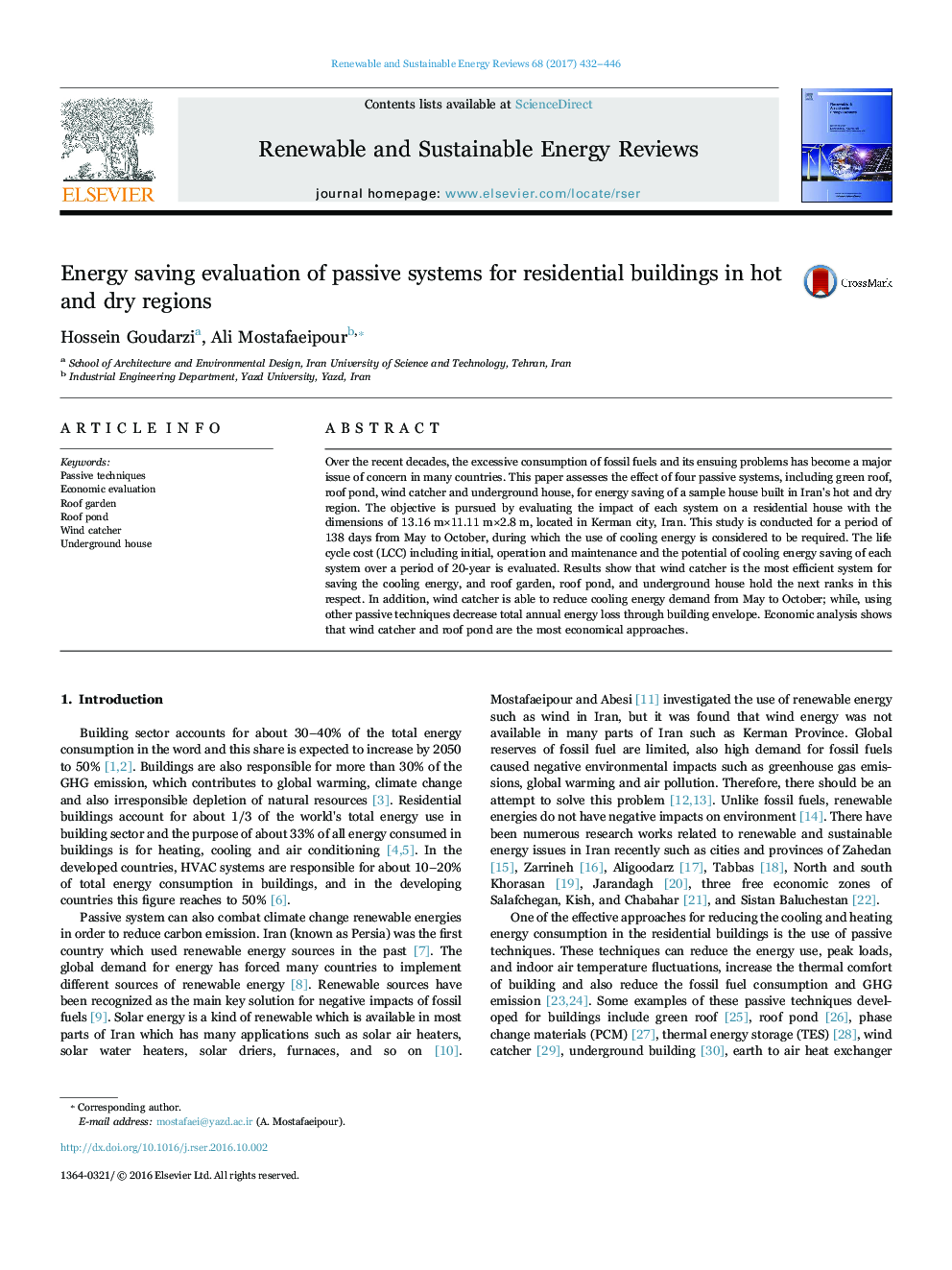| Article ID | Journal | Published Year | Pages | File Type |
|---|---|---|---|---|
| 5482682 | Renewable and Sustainable Energy Reviews | 2017 | 15 Pages |
Abstract
Over the recent decades, the excessive consumption of fossil fuels and its ensuing problems has become a major issue of concern in many countries. This paper assesses the effect of four passive systems, including green roof, roof pond, wind catcher and underground house, for energy saving of a sample house built in Iran's hot and dry region. The objective is pursued by evaluating the impact of each system on a residential house with the dimensions of 13.16Â mÃ11.11Â mÃ2.8Â m, located in Kerman city, Iran. This study is conducted for a period of 138 days from May to October, during which the use of cooling energy is considered to be required. The life cycle cost (LCC) including initial, operation and maintenance and the potential of cooling energy saving of each system over a period of 20-year is evaluated. Results show that wind catcher is the most efficient system for saving the cooling energy, and roof garden, roof pond, and underground house hold the next ranks in this respect. In addition, wind catcher is able to reduce cooling energy demand from May to October; while, using other passive techniques decrease total annual energy loss through building envelope. Economic analysis shows that wind catcher and roof pond are the most economical approaches.
Related Topics
Physical Sciences and Engineering
Energy
Renewable Energy, Sustainability and the Environment
Authors
Hossein Goudarzi, Ali Mostafaeipour,
